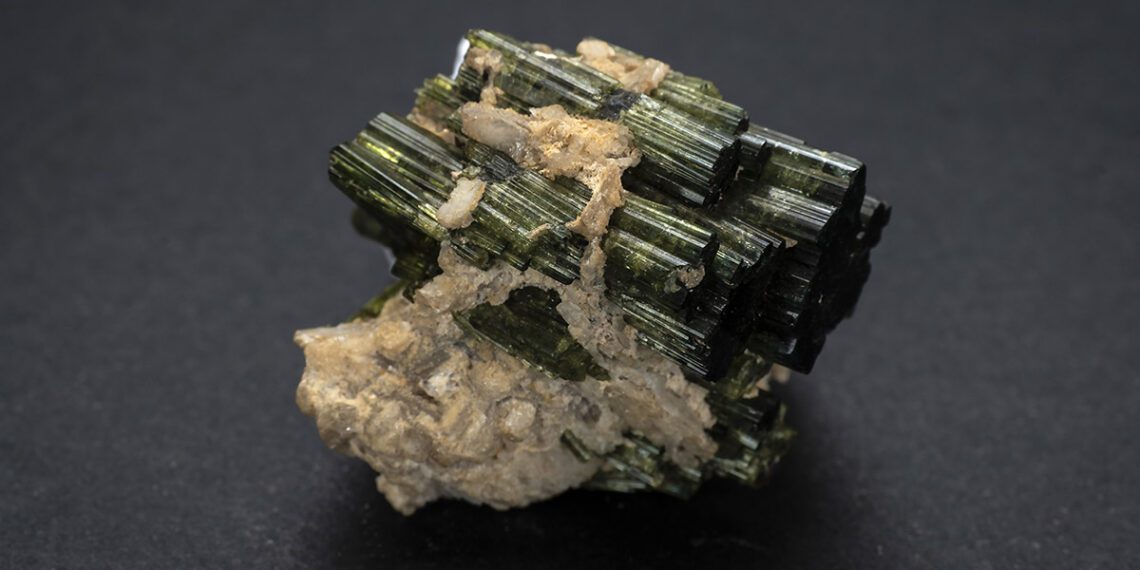Boron is all around us in our everyday lives. Yet while boron is an element that most people probably know little or nothing about, it is classified as a strategic commodity in many countries, including the U.S. and in the EU.
Boron is an unseen ingredient in much of the technology in our homes and offices. It is found in the walls and ceilings of homes, in bathroom products, and in kitchen cabinets.
It is considered an essential micronutrient for crops and is found in much of the food we eat. It appears on driveways and is fundamental in powering cars.
A recent ResearchAndMarkets.com report on the “Worldwide Boron Carbide Industry to 2027” – predicts the global boron carbide market will grow at a CAGR of 3.7% over the forecast period from 2021-2027.
The tech metal market is seen as a particularly strong area for future growth.
For example, boron-laden permanent magnets are used in hundreds of different end-uses and applications, many of which we interact with daily. Mobile phones, EV traction motors and wind power generators all contain the element, and boron-laden permanent magnets appear all around us.
Green applications
As the world adopts greener practices, borates will become more widely use in solar photovoltaics (PV) and wind turbines.
And it is its potential use in electric vehicles (EVs) and rechargeable batteries that is really attracting industry interest in boron and its many offshoots.
Boron is a popular element in the electrical capacitors that are necessary for storing electrical energy. There is demand for electrical capacitors made from borate chemicals, which can be found in many formulations and parts of manufacturing aluminium-plate capacitors.
Supercapacitor technology relies on an electrolyte containing a small amount of boron that allows them to store 10-times more charge than traditional batteries with better durability over time, making electric cars possible.
Boron is also considered to have a higher energy density than lithium and there are a number of studies into its potential to replace lithium in rechargeable batteries.
A major selling point for the use of boron in potential areas like advanced hybrid car engines and batteries is the elements ability to sustain high temperatures without melting.
Boron also has versatile electron-deficient nature, which means it is able to accept electrons from other elements and easily forms many interesting compounds with both metals and non-metals.
There have also been studies into a potential energy source created through the fusion of boron and hydrogen – an option which is considered particularly attractive due to the fact that both elements are plentiful.
Market position
Boron’s potential future as a tech metal has ushered in a recent surge in market demand – and supply issues.
ASX-listed American Pacific Borates Limited (ASX: ABR) recently reported that its research and the ongoing feedback of market participants have highlighted that boron supply is constrained in the North American market.
It said further tightening of North American markets has seen pricing nearing US$900 per tonne for boric acid, 20% higher than the US$750 per tonne used in previous company studies.
American Pacific Borates recently signed a letter of intent with Borman Specialty Materials for the supply of boron specialty advanced materials from its Fort Cady Integrated Boron Facility in southern California, U.S.
American Pacific Borates’ CEO, Henri Tausch, said that under the terms of the LOI, the parties will work towards a binding agreement for the supply of boric acid, and other boron specialties, which will be used to manufacture products with critical applications for future facing global markets, including the semiconductor, life sciences, aerospace, military and automotive markets.
Mr Tausch said American Pacific Borates continues to conduct market studies with the focus remaining on high-margin, high-performance boric-acid-derivate products that support global decarbonization strategies for the electrification of transport, clean energy production, food security, and energy storage applications.
Boron: keeping the world fed
Boron is also considered a critical ingredient in being able to feed a growing global population. Boron exists everywhere, with plants needing boron to grow, while people need borates in their diet.
This broad application means demand is driven by the “big picture”’ trends of increasing energy efficiency, food security, and urbanization.
Around 20% of the future market is tipped to be taken up for fertilizer, with boron being the second-most consumed micro-nutrient in North America by value.
China is currently the biggest consumer of borates and it expected that as countries like China and India continue to urbanize and grow, they will consume more and more products that use boron.
What are borates?
Borates are naturally-occurring minerals containing boron, the fifth element on the Periodic Table. Boron exists all around us – in rocks, soil, and water. Plants also need boron to grow. People need borates too, as an important part of a healthy diet and an essential ingredient in many products necessary for an acceptable standard of living.
However, borates have also been an essential ingredient in ceramic and enamel glazes for centuries, integral to affixing glazes or enamels, and enhancing their durability.
Borates continue to gain acceptance as an essential ingredient in ceramic tile bodies, allowing manufacturers to use a wider range of clays, heightening productivity, and decreasing energy usage during production.
Borates increase the mechanical strength of glass, as well as their resistance to thermal shock, chemicals, and water. Glass manufacturing is a key market for borates, accounting for more than 50% of global consumption, predominantly comprised of fibreglass (both insulation and electronics) and borosilicate glasses.
The global borates market is expected to grow at 3% CAGR for the next five years to reach 2.65 million tonnes (Mt) B₂O₃ equivalent by 2023.












